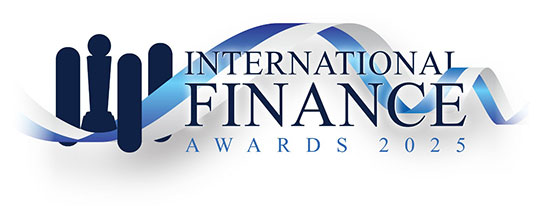Opening a business and being your own boss is an idea which is both liberating and exciting. However, many business experts and mentors will encourage you to opt for business loans in order to buy the right equipment and resources to begin your entrepreneurial journey.
However, as per noted financing and credit expert Gerri Detweiler, while business debt can be a tool for growth, when it gets to be too much, it can also prevent a business from taking advantage of opportunities to grow. If the businesses, especially the small ones, are operating in a high interest rate environment, it leads to a situation where the decision to pay some creditors more slowly and hold onto capital longer leads to higher delinquency rates, hurting both the lenders and the entrepreneurs in the process.
How Grave the Problem Can Get?
“Business debt isn’t always bad. A business may be able to leverage debt to grow their business more quickly than if they grow organically from revenue. They use short-term debt to buy inventory, solve short-term cash flow problems, expand product lines, or to make other investments. They can use long-term debt to expand facilities, acquire high-cost equipment, or even to acquire other businesses,” states Detweiler.
However, if the entrepreneurs don’t have a clear grasp on how to use business debt successfully, they can find their business struggling to pay debt, rather than focusing on investing in their business. To be honest, there’s no single answer to how much debt is okay and how much is too much. However, there are some warning signs that debt levels may no longer be sustainable. These are missed payments, borrowing to make payments on debt, declining business credit scores, excessive UCC (Uniform Commercial Code) filings and limited borrowing options.
Part of running a small business owner is deciding how much risk you’re willing to take, and debt is part of that decision-making process. Ultimately, you’ll need to determine how much debt your business can handle. However, there are some metrics that lenders can use to evaluate whether a small business can handle its existing debt plus a new loan and these can be helpful as you evaluate your business debt. Some of these yardsticks are debt service coverage ratio, debt-to-income ratio and debt-to-equity ratio.
For Detweiler, business leaders need to use their accounting software to run financial statements so they can understand how their levels of business debt are affecting their operations. If they are having signs like troubles regarding on-time payments, dropping credit scores, more borrowing of money, putting off investments in initiatives due to cash crunch, severe volatility in revenue and business expenses (negative ones), pay cuts among the staffers, then the sign is crystal clear: the businesses are reeling under the debt pressure.
How To Be Debt Free?
Operating a debt-free business may sound like a utopia, but some businesses eventually find that debt provides their business with a competitive advantage. It may allow them to get inventory using inventory financing, which they can turn around and sell for a profit. Or it may allow a business to invest in paid social media marketing that provides a profitable return on ad spend (ROAS).
“It may allow them to invest in better equipment that allows them to produce more and/or lower costs. It may help the business purchase commercial real estate to save money on rent and/or serve more customers,” says Carrie Smith, founder of www.carefulcents.com.
Some of the business leaders may have the money to pay off debt, but they may not be sure whether that’s the best use of their funds. In that case, they must consider talking with accounting professionals or business advisors. These specialists can review the business finances and help entrepreneurs to weigh their options. The best way to ensure that a business starts and runs for the short term without/minimal debt, is to build a foolproof financial foundation. This copy will talk in detail about that.
Calculate Average Monthly Income
Before starting your business, figure out your average monthly income. This can be difficult as it fluctuates from month to month but it’s a vital part of your venture’s financial success.
“Start by adding up all the money you made from the last quarter, or over the last year, and divide it by the same number of months to find the average. This will give you a solid number to work with when creating your business budget,” advises Smith.
“If your self-employed income varies dramatically, use the lowest income month as your baseline number. For example, if one month you made USD 3,000 and the next two months you made over USD 6,000 each month, it’s best to use the USD 3,000 figure as your baseline. That way you won’t get caught off guard when you have too many low-income months with high expenses,” she added.
Separate Wants From Needs
Estimating your expenses is a little easier as a business owner than estimating your income. Start off with the most important things first: your needs. These are things that are essential to running your business. Then add in your list of wants, or things you’d like to have for your venture but don’t necessarily need for it to keep running.
Remember, “needs” are necessary, whereas “wants” can be added to your business at later stages (as you build and upscale your operations).
“The total of your wants plus needs will create your overall expenses figure. You always want to separate your wants and needs in the event you have several low months of income, and can only pay the essentials,” Smith noted.
In case the scenario explained in the above scenario plays out multiple months in a row, think about finding areas in your budget to cut back on even more, otherwise you need to find more revenue. Banking on making more income each month will give you stress and anxiety. So be economical for the short term.
Plan For Big Windfalls In Advance
What about those months when you land a big project, or get a bonus from closing a deal? or your profits suddenly spike up? What should you do with these big windfalls? Create a plan ahead of time, by dividing bonuses into three categories: saving, investing and goals.
“One of the most essential things to have when you’re self-employed is a feast and famine account, just in case. You only touch this account when you really need it to cover emergencies or other essential needs. Having this account will make you feel more secure about your overall financial picture, and help you get by in the hard months — without having to use debt for leverage,” comments Smith.
“If you already have a feast and famine account in place, then your big windfall can be invested for the future of your business, buying equipment or put towards your long-term goals,” she adds further.
Set Aside 25% Of Your Income For Taxes
Since you’re the boss now, you won’t have taxes withheld from your paycheck like you would at your regular job. And since the IRS (United States Internal Revenue Service) requires taxes to be paid, “at the time the income is earned” you’ll most likely have to make estimated tax payments every quarter, also known as QET’s (Quarterly Estimated Taxes).
“Depending on the state you live in, it’s a good idea to set aside at least 25% of your income towards paying taxes. I actually set up a separate savings account called income taxes, and at the end of each month, I calculate 25% of the income my business made that month and transfer it over to my income tax account. Then every quarter, when it’s time to send in QET’s, I have the money set aside,” Smith narrates her own experience.
Only Buy What You Can Afford
This step may sound like a no-brainer but it’s worth a reminder. If you’re ready to, or really need to shell out some money to hire or buy supplies, only do so if you can pay for the purchases outright.
This is why your business must have some money saved up, for emergencies and growth expenditures. If you use credit cards and business loans as an extension of your income, it’s a recipe for disaster. Nothing will sink your business or your personal freedom more than having debt weighing you down.
“Create a plan to live within your means every month, and only use debt products as a means to an end. Don’t rely on them forever as they can become a crutch. If you follow these simple steps you’ll be able to build a business without debt and have no problem paying all your bills, dealing with windfalls and paying taxes. You’ll watch your business grow organically and it will be well on its way to a successful business!” Smith concluded.

